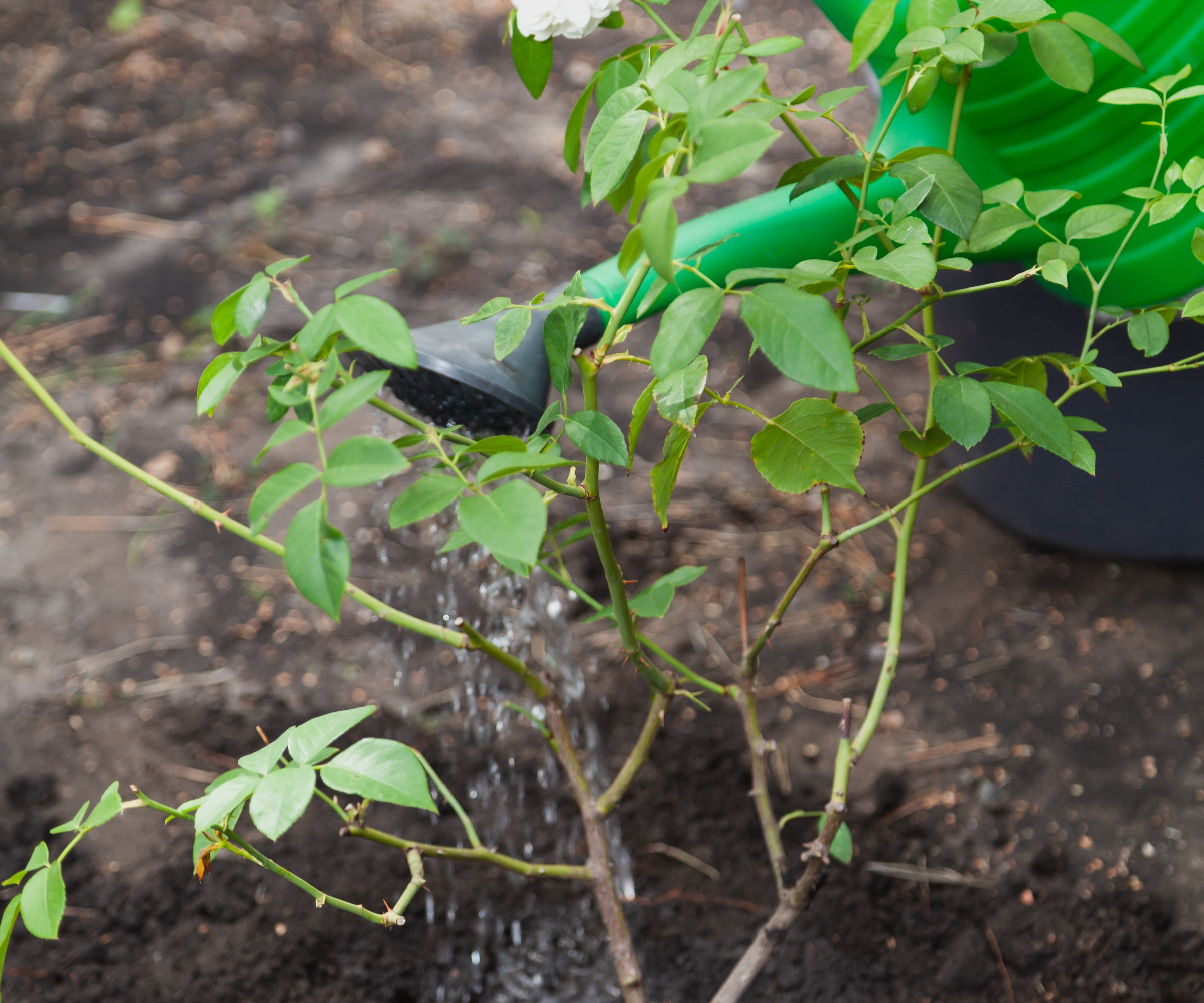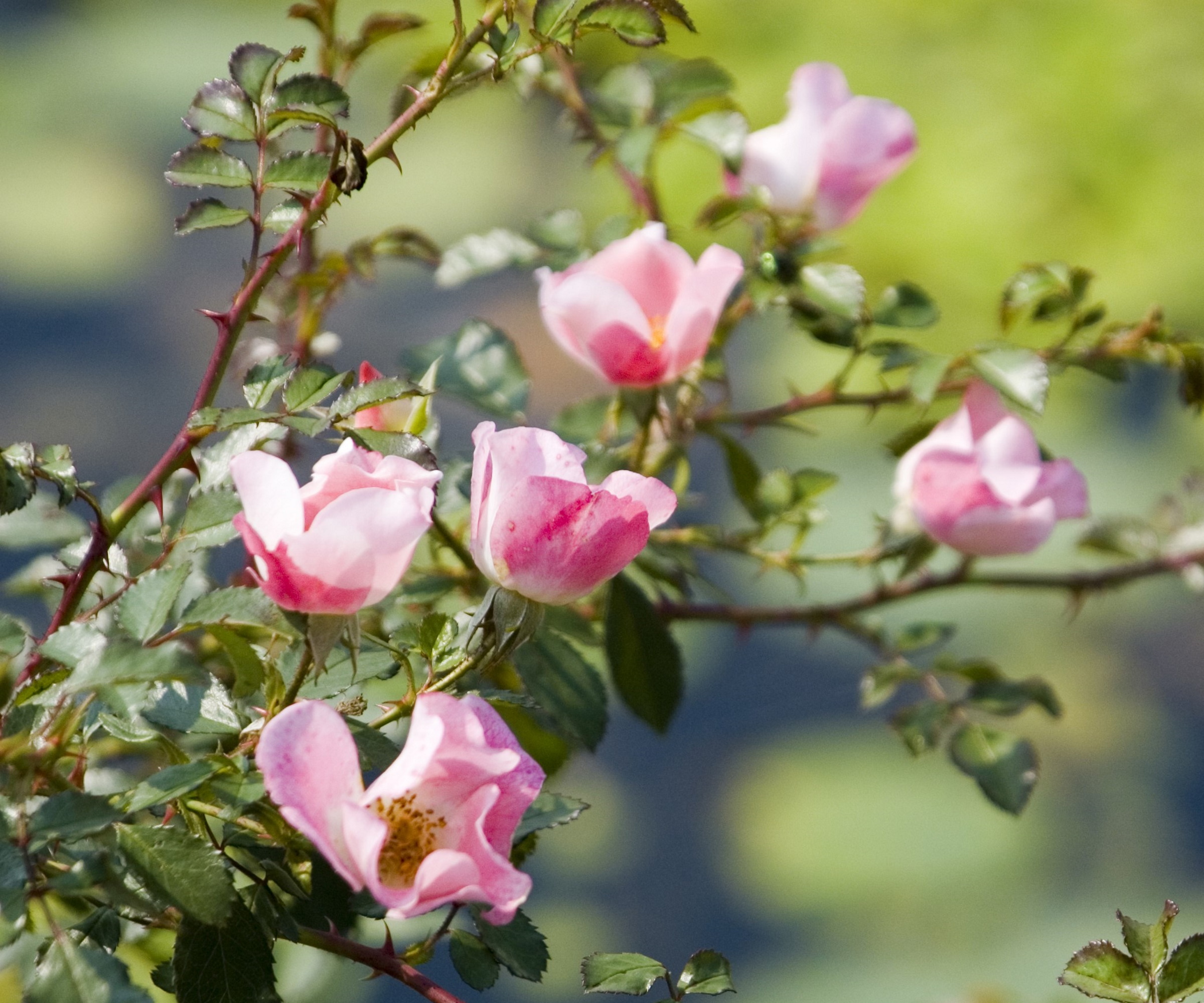When and how to move a rose – expert advice for successfully transplanting roses
Timing and preparation are both of paramount importance when moving roses.


Adored for their romantic blooms, roses have long been the go-to flowering shrub for gardeners worldwide. There is a rose suitable for any garden style - climbing roses, shrub roses, miniature roses - whatever the outside space, there is a rose that can be grown.
You may have old and established roses that were planted many years before, a testament to the enduring popularity of this flower. Sometimes, however, rose plants might have been positioned incorrectly. In addition, the design of planting borders can change with different gardeners and homeowners, and now and then we may want to retain a rose but grow it in a different spot.
You might be well-versed in rose care and growing, but are unaware that transplanting or moving roses is possible. While there are certain steps and rules to follow when learning how to plant roses that have been moved, don't be reluctant to give it a go. Here, we share advice from rose experts on how best to transplant a rose in your yard.

How and when to move a rose
If you are planning to transplant a rose in your yard, decide the best possible new location before you begin. While many of the best rose varieties - such as ground cover roses - have different growing preferences, most typically need a minimum of 6 to 8 hours of sunlight per day, so be sure to choose a location in a sunny spot with well-draining soil.
When is the right time to move a rose?

Transplanting roses can be done in either early spring or fall. Whichever season you choose, it is best to move your rose when there is no risk of frost or cold weather, which will differ between regions with different US hardiness zones.
'I recommend transplanting roses right before they break dormancy, so in the very early months of spring,' says Robin Jennings, rose expert and Manager of Strategic Partnerships at Heirloom Roses.
'If you need to move your rose in the summertime, the earlier the better but it may experience transplant shock and look a little wilted or sad until its roots are established in the new spot,' Robin continues.
Design expertise in your inbox – from inspiring decorating ideas and beautiful celebrity homes to practical gardening advice and shopping round-ups.
It is best to 'avoid moving roses in late fall or just before winter sets in since it won't give them enough time to get established before the cold weather sets in,' Robin adds.

Robin Jennings, a city girl from Canada, discovered her passion for gardening in the farmland of Oregon's Willamette Valley. Robin works for Heirloom Roses, where she collaborates with hybridizers to promote the beauty of own-root roses and preserve older varieties.
How to prepare your rose for transplanting

When moving roses, it is important to consider how to prune roses before transplanting. Using sharp secateurs, such as these Felco pruning shears from Walmart, 'cut the stems back to about 10 to 12 inches from the root ball,' says plant expert Katie Sunderlage. 'While this might seem cruel it is sadly necessary, as when transplanting roses we must remove many old stems so that the rose can focus on root growth and re-establishing itself.'
Once the main stems are approximately 10 to 12 inches tall, it is a good idea to 'remove any foliage from the remaining rose stems to enable the plant to put more energy into root development,' Katie adds.
Finally, it is a good idea to water your rose the day before you intend to move it. This is particularly important if you transplant in spring when temperatures can quickly increase.

Operations Manager at Holland Group, managing the customer service department and purchasing. Katie has been in the green industry since 2005 in the Greater Milwaukee area, earning her degree in Horticulture in 2008. She has been able to share her love for plants working in multiple garden centers, in sales positions and most recently in an online retail platform at Holland Group.
How to move a rose

Landscaping with roses is a great way to add colorful and scented blooms to any space, and transplanting old roses to new locations is an easy way to modify your yard.
Once you have prepared your rose, cutting it back and watering it the day before, it is time to reach for the tools. 'Dig the rose up on a mild, dry day,' continues Robin. 'The trick is trying to lift as much of the root ball as possible.'
I would recommend carefully digging in a circle around the rose, working at about 10 to 20 inches out from the rose stem. It can help to switch between using a spade and a garden fork, which can help tease the roots as you attempt to wiggle and lift your rose. It is important to lift as much of the root ball as possible, but do not worry too much if you have to cut one or two roots that extend too wide or too deep.
'Once lifted, move your rose to its new location, preferably a spot that has not had a rose growing in it before,' Robin adds. 'Dig a large hole about 2 feet deep and 2 feet wide, combining some nutrient-rich soil and fertilizer in the hole before you move the rose.' I would suggest using bone meal, available from Walmart, which will help your rose to establish new roots.
'Be sure to backfill soil around your rose, and then water thoroughly,' Robin says. 'Don't fertilize the plant until you see new growth and foliage.' Robin recommends using fish fertilizer, available from Walmart, during the first year to 'help boost the plant's health as it adjusts to its new home.'
Caring for a rose after transplanting

'After transplanting, give your rose a deep soaking and continue watering 1 to 2 times per week with 3 to 5 gallons of water depending on your weather,' Robin says. 'More water may be needed if it's hotter, less if you have had some rain.'
'I would suggest giving the plant a monthly feeding of fish fertilizer in one of the waterings, but avoid using granular fertilizer as it could burn any new roots that the plant is sending out,' Robin adds.
'If transplanted in the spring, your rose should perk right up. I just moved my 'Cherry Parfait' rose this spring, and it is doing great,' Robin continues. 'If you transplant in the summer, give it a few weeks to recover and be diligent with your watering.'
FAQs
Can I move a climbing rose the same way that I would move a shrub rose?
Yes, climbing roses can be moved, and the same rules do apply. Prune your climbing rose before transplanting, and cut down the central stems to approximately 10 to 15 inches, snipping just above a leaf node. It is best to move your climbing rose in early spring, just before the rose begins to shoot. If your climbing rose is very old and covers a large facade, consider if you should move it, as it can take many years to regrow.
Moving roses needn't be complicated, and by following our step-by-step guide, you will be able to successfully transplant roses to preferred positions in the backyard. For more rose garden ideas, consider our guide on some of the best fragrant roses, and add colorful and perfumed blooms to your collection this year.

Thomas is a Content Editor within the Gardens Team at Homes and Gardens. He has worked as a professional gardener for both public spaces and private estates, specializing in productive gardening, growing food and flowers. Trained in Horticulture at the Garden Museum, he has written on gardening and garden history for various publications, including The English Garden, Gardens Illustrated, Hortus, The London Gardener and Bloom. He has co-authored a Lonely Planet travel book, The Tree Atlas, due out in 2024.